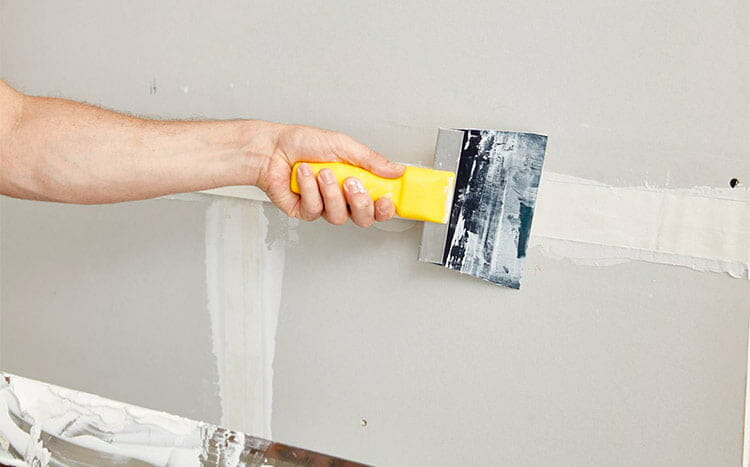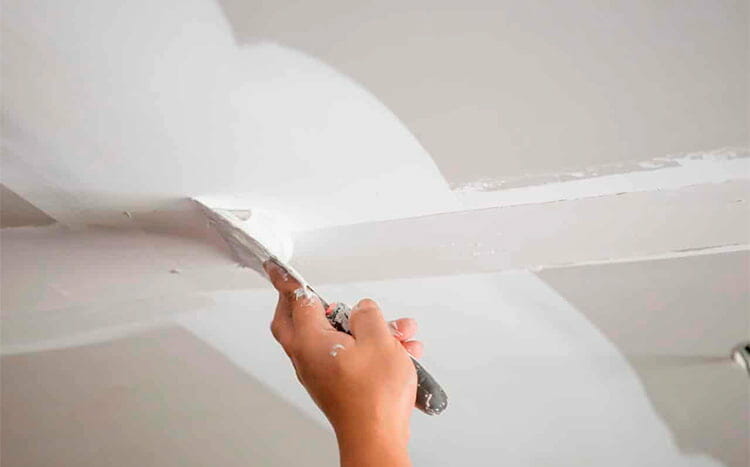Occasionally, life presents unexpected challenges, like discovering a ding or scrape on your wall that requires repair and a new layer of paint. In such instances, it’s wise to seek out an expert skilled in wall repairs and proficient in giving them a chic makeover with a splash of paint. Therefore, opt for an individual who excels in repairing drywall and possesses the ability to use a paintbrush as if it were a magical tool.
Most professional painters can fix, replace, and repair drywall before painting. Surfaces always need to be smooth to get a good finish after painting, so it’s in their best interest. I would not excerpt a painter to replace a whole drywall room, but they can and will fix holes, cracks and other defects.
Is it cheaper to get a painter to fix drywall?
It will be cheaper to just have your painter fix patches than get a separate contractor out to do the job. You will need to discuss this with your painter first and see what they charge, but you will generally save money.
Can You Paint Over Damaged Drywall?
No, it’s never a good idea to hide or try to cover drywall defects such as cracks or scratches with paint. While the paint might hide the blemishes for a short while, the cracks or scratches may reappear in the future.
It is possible to paint over damaged drywall as a temporary solution but doing repairs before applying new paint for uniformity is better.
The only instances where painting over damaged drywall could work are:
- When there is minor damage caused my wallpaper removal
- If the damage is quite minimal and in a small area
- If there is minimal peeling
- When there is discoloration or fading
- To remove blemishes brought about by insect or mold damage
Seek advice from a professional home improvement expert or painter before you paint over damaged drywall just to be sure. Professional painters will also be able to tell whether a simple repainting job is all that is needed or if the drywall must be fixed first before repainting.

Why Drywall Repair Is Necessary Before You Paint
You need to repair drywall before applying new paint for the following reasons;
- To Prevent Further Damage
Small or large cracks on drywall usually widen over time for various reasons. Covering a crack with a coat of paint may hide it on the surface, but a slight touch or impact will reveal it and probably cause further damage. At the same time, insects, mold, and other external elements may find it easier to get behind drywall through hidden cracks.
- To Get Rid of Water Stains
Water stains are incredibly hard to hide with paint. They also cause an entire section of drywall to become weak and crumble if left unrepaired. Wet drywall also provides the perfect conditions for toxic mold to grow and spread, causing more damage over time. You must repair water-damaged drywall and leave it to dry before repainting it.
In some cases, the painter may need to tear down the entire drywall section that is water damaged and install a new one. The material used to make drywall usually performs poorly if exposed to excessive water.
- To Remove Interior Cracks and Warps
Sometimes drywall may form cracks or warps on the inside that are only visible as bumps or protrusions on the outside. In the worst-case scenario, such cracks will eventually show or cause a section of the drywall to crumble. You must repair these defects using latex caulk or other materials that will preserve the integrity of the affected area.
- To Kill or Prevent Mold
Cracks or holes in drywall can allow any floating mold spores to enter. After a while, the mold spores will grow and release more spores into the air through the vents or conduits hidden behind drywall. Therefore, you must first repair cracked or defective drywall before you paint to kill any existing mold.
- For A Smoother Paint Job
It’s difficult to have a smooth paint job when you are painting over cracks, scratches, and holes. Even with thick interior paints, visible bumps and imperfections may be visible on the drywall surface. By repairing the drywall and applying caulk or new gypsum, the results will be more appealing to the eye.
- To Preserve the Integrity of Drywall
Drywall serves many purposes, such as a thermal insulator, physical barrier, and sound suppressor. Having holes or cracks hidden behind a thin layer of paint usually makes the drywall less effective against heat, cold, and sound. It may also disintegrate more easily with time.
Is It Better to Repair or Replace Drywall?
You may have to choose between replacing an entire section of damaged drywall or patching. Drywall replacement is more expensive than repair but may be necessary sometimes.
Only replace drywall if there is significant water damage, large holes, or cracks above six inches wide or when there is significant mold damage that a simple repair can’t do. Compared to replacing or installing new drywall, you will find it hard and costly to repair drywall with such problems.
Repair drywall if the affected area is small enough that the painter can use a piece of drywall and joint compound to patch it. Small holes, indentations, scrapes, fading, discoloration, or scratches can be repaired easily and cheaply using off-the-shelf drywall tape or self-adhesive drywall patches.
How Much Does It Cost to Patch and Paint Drywall?
Total costs to patch drywall range between $300 to $750 depending on the amount of damage, materials needed, and time it takes, assuming you hire a professional painter. Cost to paint also ranges between $150 to $500 depending on the same factors. You can expect to spend between $450 to $1250 to patch and repair drywall.
Can I Fix Drywall Myself?
Fixing drywall may seem like an easy task but it’s quite complex. You may end up causing more damage trying to patch or fix a simple defect. If unsure about what needs to be done, find a professional to inspect, repair, and paint damaged drywall for you. Costs for drywall repair and repainting are quite low so you won’t be saving much money doing the repairs yourself.

DIY Vs Pro Painter
Some of the reasons you should consider hiring a professional painter include the following:
- Quality – you are assured that the quality of the repair job and painting is higher than if you did it yourself. Most painting services also have warranties for their work.
- Experience- Professional painters have more experience repairing and painting drywall. With the skills acquired from previous jobs, they will save you money and time by doing a perfect job.
- Less wastage- Professionals are less likely to waste materials as they know exactly what is required and how it is used. This will save you money.
- Quicker repairs- Professional painters generally take less time than amateurs to complete the job.
- Insurance- Professional painters have insurance against work-related injuries or errors.
Tip: Finding a reliable painter can be daunting for most people. To make it easier for you, we have designed a free contractor search tool that you can use to find top-rated painters near you. To use it, just scroll to the top of this page and enter your zip code in the search box. The tool will help you find up to three painters who will send you free work estimates and some friendly advice.
How to Select Drywall Repair and Painting Services
Some of the things you should look for when choosing a drywall repair and painting service are:
The company should be licensed
- The painting company or painter should have evidence of past jobs or a comprehensive portfolio
- If possible, find a painting service near you for easier coordination
- The painting service should be willing to do a site visit before giving a final work estimate
- The painting service should be willing to advise you on material suppliers
- They should be ready to sign a written contract
- They should be insured
- The company should have some type of warranty for their work
- Only choose a painting company that has clear payment terms and transparent billing.
Do Painters Fix Drywall Cracks?
Most painters can also do minor or major repairs on drywall and other related items. However, enquire first before you hire one if they can also do repairs. Some specialize in painting and may not have the tools or expertise to repair drywall defects before painting.
What Do Painters Fill Nail Holes With?
There are many products out there that a painter can use to fill nails. However, caulk or filler is the most used material for small holes left behind by nails or thumbtacks. Painters also use the joint compound, spackling compound, gypsum, drywall repair putty, wood filler, and drywall repair patches to fill nail holes.
FAQ's
Holes below 8 inches in diameter can be patched with relative ease. However, large holes are harder to repair, requiring more material and time.
Yes, joint compounds can be used to repair small or medium-sized holes or scratches on drywall. Caulk, filler, gypsum, or special drywall repair compounds should be used for larger holes or cracks to preserve the integrity of the wall.
Drywall patches can show through paint if they are not attached flush and pressed. Make sure you follow the instructions that come with the drywall patch to attach it properly. Also, use the correct sized patch depending on the size of the hole or crack.
Ensure the crack is properly sealed using the correct sealant or compound. You may need to cut the drywall around the crack and seal it using a pre-cut compound. Also ensure that the sealant, caulk, or joint compound is dry before you paint over the repaired section.







